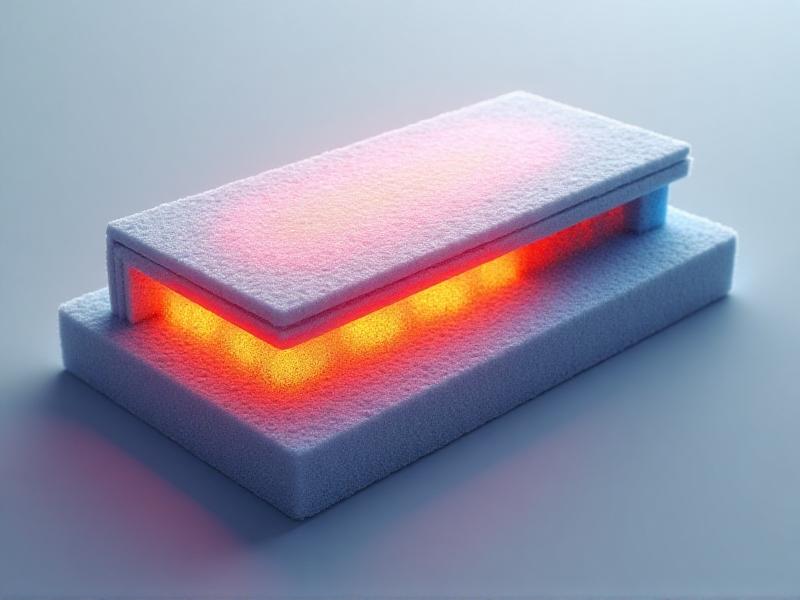Patent Pending Design Protection Guide
Understanding Patent Pending Design Protection
Patent pending design protection is a crucial step for inventors and designers who want to safeguard their innovative ideas before they are fully patented. This status indicates that a patent application has been filed with the relevant patent office but has not yet been granted. It serves as a warning to potential infringers that the design is legally protected, even though the patent is not yet finalized.
During the patent pending period, the inventor gains provisional rights, which can be enforced once the patent is granted. This period is critical for establishing a competitive edge in the market, as it deters others from copying or exploiting the design. However, it’s important to note that patent pending does not provide the same level of protection as a granted patent. The inventor must still wait for the patent office to complete its examination process.
For designers, understanding the nuances of patent pending status is essential. It allows them to market their products with confidence, knowing that their intellectual property is in the process of being legally recognized. Additionally, it provides a foundation for future legal action if infringement occurs during or after the patent pending period.

The Process of Filing a Patent Application
Filing a patent application is a meticulous process that requires careful preparation and attention to detail. The first step involves conducting a thorough patent search to ensure that the design is novel and does not infringe on existing patents. This search helps to identify prior art and assess the likelihood of the patent being granted.
Once the search is complete, the inventor must prepare a detailed patent application. This includes a written description of the design, technical drawings, and claims that define the scope of protection sought. The application must meet the specific requirements of the patent office, such as formatting and language standards.
After submitting the application, the inventor enters the patent pending period. During this time, the patent office examines the application to determine if the design meets the criteria for patentability. This process can take several months or even years, depending on the complexity of the design and the workload of the patent office.
It’s important for inventors to work closely with a patent attorney or agent during this process. These professionals can provide valuable guidance, ensure that the application is properly prepared, and help navigate any challenges that arise during the examination process.

Benefits of Patent Pending Status
The patent pending status offers several benefits to inventors and designers. One of the primary advantages is the ability to publicly disclose the design without risking loss of patent rights. This is particularly important for those who need to market their products or seek investment while the patent is still being processed.
Another benefit is the deterrent effect it has on potential infringers. By marking a product as patent pending, inventors signal that they are serious about protecting their intellectual property. This can discourage competitors from copying the design or developing similar products, giving the inventor a competitive advantage in the market.
Additionally, the patent pending status can enhance the perceived value of a product. Consumers and investors often view patented or patent-pending designs as more innovative and trustworthy. This can lead to increased sales, higher investment interest, and stronger brand recognition.
However, it’s important to use the patent pending designation responsibly. Misusing this status, such as by applying it to products that have not actually been filed for a patent, can lead to legal consequences and damage the inventor’s reputation.

Challenges and Considerations During the Patent Pending Period
While the patent pending status offers many advantages, it also comes with its own set of challenges. One of the primary concerns is the uncertainty of the patent examination process. The patent may not be issued, and upon comments from the patent office, the inventor might have to modify the application.
Another challenge is the potential for infringement during the patent pending period. Although the inventor has provisional rights, enforcing these rights can be difficult without a granted patent. This can lead to legal disputes and financial losses if competitors exploit the design before the patent is finalized.
Inventors must also consider the cost of maintaining the patent pending status. Filing fees, attorney fees, and other expenses can add up quickly, especially if the examination process is prolonged. It’s important to budget for these costs and plan accordingly to avoid financial strain.
Finally, inventors should be mindful of the time it takes to secure a patent. The patent pending period can last several years, during which the inventor must remain vigilant about protecting their design and monitoring the market for potential infringements.
Best Practices for Maximizing Patent Pending Protection
To make the most of the patent pending status, inventors should follow several best practices. First and foremost, it’s essential to file the patent application as early as possible. This ensures that the inventor’s rights are protected from the moment the design is publicly disclosed or marketed.
Another best practice is to work with a qualified patent attorney or agent. These professionals can help navigate the complexities of the patent application process, ensure that the application is properly prepared, and provide valuable advice on protecting the design during the patent pending period.
Inventors should also be proactive in monitoring the market for potential infringements. This includes keeping an eye on competitors, conducting regular searches for similar products, and taking swift action if infringement is suspected. Early discovery can reduce the effect of infringement and improve the legal standing of the innovator.
Finally, it’s important to use the patent pending designation correctly and responsibly. This includes clearly marking products and marketing materials with the patent pending label and ensuring that the designation is only used for designs that have actually been filed for a patent.
Navigating International Patent Pending Protection
For inventors looking to protect their designs in multiple countries, navigating international patent pending protection can be complex. The process typically involves filing a patent application in each country where protection is sought, or using international treaties such as the Patent Cooperation Treaty (PCT) to streamline the process.
One of the key considerations when filing internationally is the differences in patent laws and procedures between countries. Each country has its own requirements for patentability, examination processes, and timelines. Inventors must be prepared to adapt their applications to meet these varying standards.
Another challenge is the cost of international patent protection. Filing fees, translation costs, and attorney fees can add up quickly, especially when seeking protection in multiple countries. Inventors should carefully consider their budget and prioritize the countries where protection is most critical.
Despite these challenges, international patent pending protection can be highly valuable for inventors with global ambitions. It allows them to secure their intellectual property rights in key markets, deter infringement, and establish a strong competitive position on a global scale.
Common Misconceptions About Patent Pending Status
There are several common misconceptions about patent pending status that can lead to confusion and mistakes. One of the most prevalent is the belief that patent pending provides the same level of protection as a granted patent. In reality, patent pending only indicates that an application has been filed, and the inventor’s rights are not fully enforceable until the patent is granted.
Another misconception is that the patent pending period is short and straightforward. In fact, the examination process can take several years, and inventors may need to respond to office actions or make amendments to the application during this time.
Some inventors also mistakenly believe that they can use the patent pending designation for any product, even if they have not filed a patent application. This is not only unethical but can also lead to legal consequences and damage the inventor’s reputation.
Understanding these misconceptions is crucial for inventors who want to navigate the patent pending process effectively. By being aware of the limitations and responsibilities of patent pending status, inventors can make informed decisions and protect their intellectual property more effectively.
Future Trends in Patent Pending Design Protection
As technology and innovation continue to evolve, so too does the landscape of patent pending design protection. One emerging trend is the increasing use of digital tools and artificial intelligence to streamline the patent application process. These tools enable inventors to do more comprehensive patent searches, create more precise applications, and react more promptly to office actions.
Another trend is the growing importance of international patent protection. With the rise of global markets and e-commerce, inventors are increasingly seeking to protect their designs in multiple countries. This has led to greater use of international treaties and agreements, such as the PCT, to simplify the process of filing patents abroad.
Additionally, there is a growing focus on the enforcement of patent rights during the patent pending period. As competition intensifies, inventors are becoming more vigilant about monitoring the market for potential infringements and taking swift action to protect their designs.
Looking ahead, it’s likely that patent pending design protection will continue to evolve in response to these trends. Inventors who stay informed about these developments and adapt their strategies accordingly will be better positioned to protect their intellectual property and succeed in the competitive global market.







